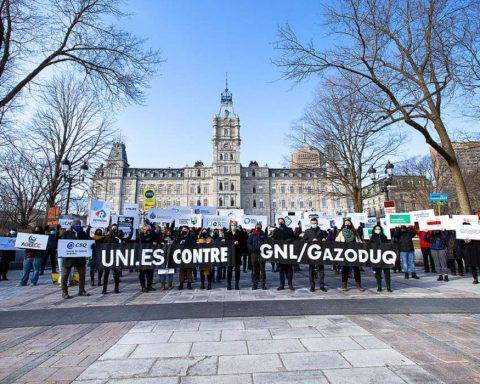The effects of climate change on an abandoned U.S. nuclear project in Greenland could create not just environmental problems, but also disrupt military politics and spur diplomatic conflicts. My new article in Global Environmental Politics finds that climate change will eventually expose toxic waste, long immobilized by ice, at Camp Century, which the U.S. military left in the 1960s. This situation – which has already spurred the dismissal of Greenland’s foreign minister – could be the canary in the coalmine signaling that climate change will further complicate the already contentious politics of military bases.
Shrinking ice exposes toxic waste
Project Iceworm, a top-secret Army initiative, sought to deploy up to 600 medium-range ballistic missiles with nuclear warheads along a 4000-km long railway cut into the Greenland ice sheet. If it had been completed as planned, it would have served as a secure second-strike capability against the Soviet Union. But as I wrote in an earlier study, the Project Iceworm sites were abandoned with minimal decommissioning in the 1960s, under the explicit assumption that snowfall and low temperatures would entomb them in perpetuity.
Rising temperatures have caused Greenland’s summer melt to exceed winter snowfall, which is gradually shrinking the ice sheet. Because the areas immediately surrounding the sites are uninhabited, the causal effect of climate change can be isolated from other factors and forecast with relatively high scientific certainty.
Climatic changes have already exposed and remobilized some toxic materials on one of the four sites, associated with a network called the Tuto Tunnels, while the waste at the other three sites is still contained. But if the polychlorinated biphenyls (PCBs) from Camp Century are exposed, they will contaminate the environment and groundwater, and eventually bio-accumulate within the region’s marine ecosystem. The PCBs could potentially put American personnel at Greenland’s Thule Air Base at risk, and might even cross national boundaries to Canadian territory.
Although most of the PCBs won’t be exposed for decades, the toxic waste could still spur diplomatic difficulties between the United States and Greenland in the present, and lead to political conflicts among the host country’s population.
Climate’s knock-on effects cause political fallout
Camp Century is a case study for understanding the likely political fallout of the knock-on effects of climate change. These knock-on effects are secondary environmental problems – such as damage to infrastructure or the release of chemicals or waste housed on site – that can manifest when temperatures and sea levels rise.
As an inherently global problem, climate change is hard to pin on any one government or political actor. By contrast, knock-on effects are territorially specific, so local people can demand somebody be held responsible. In this case, the “somebody” is the government of Greenland, which in turn looks to both Denmark and the United States to take responsibility.
But neither the United States and Denmark has yet taken responsibility for the environmental costs of cleaning up the base. The Project Iceworm bases were established between 1953 and 1967 via a treaty agreement with Denmark, at a time when Greenland was a colony of Denmark (today it is a semi-sovereign nation). Also at the time, Denmark’s foreign policy was nominally “nuclear-free,” which could provide the Danish government not only with plausible deniability of the nuclear activity at the bases, but also a means of contesting the treaty agreement allowing the United States to leave waste at the bases. Toxic wastes were not specifically mentioned.
We need to understand knock-on effects like these because they are increasingly common. Last fall, Hurricane Harvey brought this problem home to the southern United States: climate change made a storm bigger and nastier than it otherwise would have been, causing much more damage than expected to chemical plans and refineries, which in turn released toxic pollutants. Knock-on effects of climate change are also responsible for nasty stuff from anthrax outbreaks to spreading viruses to mercury pollution. As these effects increasingly move from peripheral places like Greenland to our own homes, we will find ever more reasons to worry – and seek more people to blame.
Toxic tide: rising seas could mobilize military waste in the Pacific
The environmental effects of climate change will affect the politics of military bases around the world – and not just those in the Arctic. Cold War-era sites in the Pacific Ocean, including Johnston Atoll and the Marshall Islands’ Runit Island, host radioactive leftovers, while other toxic remnants can be found at Orote Point (Guam), Ulithi Atoll (Micronesia), the Solomon Islands, and Midway Island. The rising sea levels associated with climate change elevate the risk that toxic waste left on these low-lying coral islands will be released into the ocean.
The military is very good at managing problems that it anticipates, but it’s not as good at handling complex interactions that arise from unanticipated effects. Notably, the U.S. government’s General Accountability Office recently released a report saying that the military is not doing enough to address the problems that climate change is expected to cause at military bases.
The mounting evidence that these knock-on effects could pose risks to diplomacy and security ought to give the military and policymakers an extra nudge to take action to prevent, mitigate, and adapt to climate change – before it leaves behind an even more toxic legacy.
A version of this article originally appeared on the New Security Beat







